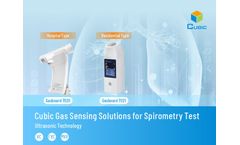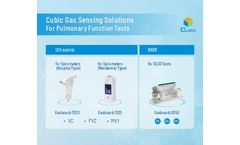Refine by
Carbonization Articles & Analysis: Older
136 articles found
Obesity is a significant contributor to respiratory disorders such as Obesity Hypoventilation Syndrome (OHS) and sleep apnea, both of which are characterized by reduced respiratory chemosensitivity. These conditions not only impair breathing but also exacerbate the health risks associated with obesity. Recent research from Rivera (2024) investigates the potential of setmelanotide, a ...
The discussion covered some interesting subjects around smoking cessation, including Stoptober, smoking cessation efforts in Malaysia, the increasing prevalence of vaping and the role carbon monoxide (CO) devices play in helping individuals quit smoking. ...
During metabolism, all cells produce carbon dioxide, however, only bacteria produce hydrogen and methane as metabolic by-products. ...
Posterolateral Rabbit Spinal Fusion Study I. Introduction Autologous bone has long been the gold standard for bone graft substitute in spinal fusion procedures. The limited supply and morbidity associated with using autologous graft material led to the development of alternative bone grafting materials. Bioactive glass has a long history of biomedical use and has been shown to facilitate mineral ...
This bond is formed between the anomeric carbon of the sugar and the alpha-phosphate of the nucleotide, creating a high-energy linkage that drives the transfer of the sugar molecule in glycosylation reactions. ...
Supercritical fluid extraction is a more advanced method that uses carbon dioxide as a solvent. In this process, carbon dioxide is pressurized to become a supercritical fluid, which has the properties of both a liquid and a gas. ...
Anti-acid APIs mainly include aluminum hydroxide, magnesium hydroxide, calcium carbonate, and sodium bicarbonate. Anti-anemia APIs Anti-anemia APIs are a class of compounds that can supplement special hematopoietic components or stimulate bone marrow function for the treatment of anemia. ...
Sudden Unexpected Death in Epilepsy (SUDEP) remains a critical concern in epilepsy management, with the underlying mechanisms still not fully understood. Recent research from Iyer, S., et al (2024) has highlighted the role of respiratory dysfunction in SUDEP, particularly involving the orexinergic system in the brain. This blog delves into a fascinating study that investigates how altered ...
Glycolysis Glycolysis is the 10-step process by which glucose is broken down into pyruvate and ATP within the cell, using a series of enzymes to convert each six-carbon glucose molecule into two three-carbon pyruvate molecules. The pathway is common to virtually all cells in both prokaryotes and eukaryotes. ...
Hydrogen is the most common target nucleus (1H-NMR), while other atoms such as carbon (13C-NMR) and phosphorus (31P-NMR) can also be used to obtain information on specific metabolite types by NMR techniques. ...
To further evaluate the efficiency of gas exchange in the lungs, DLCO (diffusing capacity of the lungs for carbon monoxide) testing is frequently employed in conjunction with spirometry. ...
Silicone companies are investing in greener production processes and recycling technologies to meet stringent environmental standards and reduce their carbon footprint. The push towards sustainability is expected to further stimulate innovation and growth in the silicone sector. ...
Throughout this process, closely monitoring key respiratory parameters, including EtCO2 (end-tidal carbon dioxide concentration) and oxygen levels, could ensure the patient's respiratory function remains normal and safe. Given that metabolic carbon dioxide (CO2) is transported from the blood to the lungs and then exhaled during breathing, EtCO2 levels can serve ...
Two critical tests of pulmonary assessment are spirometry and the measurement of diffusing capacity of the lungs for carbon monoxide (DLCO). While spirometry evaluates how effectively the lungs inhale and exhale air, DLCO assesses the lungs' efficiency in transferring oxygen into the bloodstream. ...
Carbohydrates are organic compounds made up of carbon, hydrogen, and oxygen. They are one of the main sources of energy in the diet and can be found in foods like fruits, vegetables, grains, and sugars. ...
Below listed a common range of stable labeled isotope products: Carbon-13 Deuterium Nitrogen-15 Oxygen-18 ...
As part of Cipla’s sustainability initiative, this plant will help the company avoid carbon dioxide emissions by as much as 35,000 tonnes equivalent (tCO2e) annually over its project life of 25 years. ...
Carbohydrate synthesis refers to the formation of carbohydrates from simpler molecules, such as carbon dioxide and water. This process occurs in plants through photosynthesis and in animals through various metabolic pathways. ...
These bacteria are grown in a medium containing a source of carbon, nitrogen and other nutrients and fermented at a controlled temperature and pH to produce HA. ...
Compared with radioisotopes, stable isotopes have the following characteristics, including excellent sensitivity, high measurement accuracy, no radiation and less hazardous, stable properties, stable signal values, multiple isotopes can be detected at one time, and recyclability. Isotope Example Carbon-13 Carbon-13 ( 13 C) is a naturally stable isotope of ...















